Memories of monochrome England
My half-hearted determination to “get serious” in my movie-viewing continues to falter, but I have been pursuing my taste for older black-and-white films with a couple of recent BFI releases and a big set from Network.
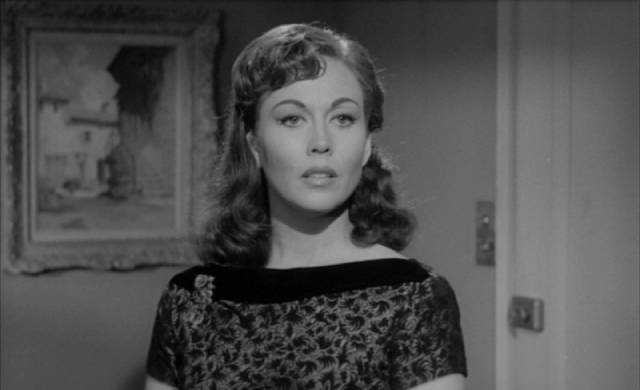
The Edgar Wallace Mysteries
That Network set has pleased me perhaps more than it should, being a large collection of minor B-movies from the early ’60s which are hardly challenging – contrived plots, stereotypical characters. And yet they’ve connected with long-buried memories of going to the cinema when I was just a young kid. Back then, say between the ages of five and ten, I’d go with parents and siblings, packing a lunch of sandwiches, buying an ice cream bar and drink from usherettes carrying trays who walked up and down the aisles during pauses in the show. Along with the main feature, there’d be shorts, a newsreel, maybe a cartoon, and a short second feature.
While I have distinct memories of the big movies – 20,000 Leagues Under the Sea, Jason and the Argonauts, Genghis Khan, Zulu, Operation Crossbow – the B-movies left only a generalized impression. Residential streets, country lanes, glimpses of London which aligned with my own experience from day trips to the city. Rain would fall, streetlights reflecting off wet pavement … these little movies took place in a world I recognized and in turn shaped my experience of that world. The mood of a rainy day was as much an emotional echo of those movies as it was of my own direct experience.
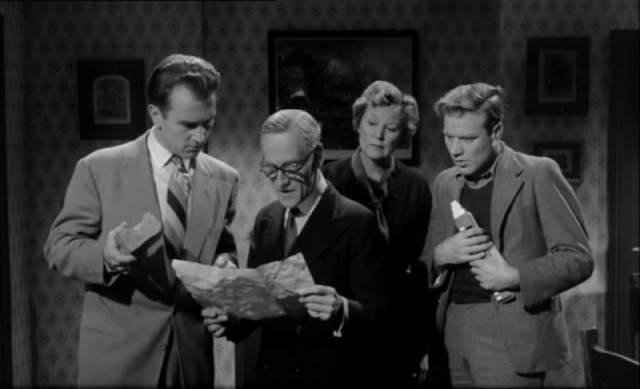
When I loaded disk one of Network’s twenty-disk Edgar Wallace Mysteries box set into the player, there was an almost visceral jolt, an immediate return to that sixty-year-old experience. Those familiar streets, that gray light, the gleam of rain on pavement and characters caught up in petty criminal schemes. You might not be able to go home again, but here was a reasonable facsimile, a sudden pang of nostalgia. Although I honestly have no idea whether I saw any of these particular movies, it seems likely that I did.
The set contains forty-seven movies, mostly updated adaptations from the novels of the prolific Edgar Wallace (1875-1932), whose books were also being adapted in Germany around the same time. Mostly clocking in at a few minutes short of an hour, there’s not a lot of time for character development or narrative nuance. There’s also not a lot of mystery, with the emphasis rather falling on the cat-and-mouse play between scheming criminals and the police (or civilian investigator).
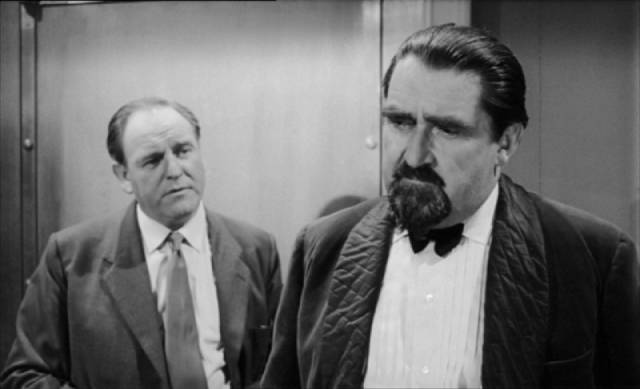
Not surprisingly, the movies have the air of episodes from an anthology television series, though production values even on very small budgets are pretty good. Casts are full of familiar British character actors who do what they do best, bringing professional commitment to material which some might consider beneath them. Adding to solid performances, the often atmospheric photography makes good use of locations which are reused from film to film.
With Anglo-Amalgamated turning out close to a movie per month for five years at Merton Park studios, the series provided work for many directors, some well into long careers, others relatively new. There are episodes by workhorses like Vernon Sewell, Quentin Lawrence and Montgomery Tully, others by Clive Donner, Sidney Hayers, Gordon Flemyng, Peter Graham Scott, Herbert Wise, Charles Jarrott, Peter Duffell, Alan Cooke, John Llewellyn Moxey, Alan Bridges, even Canadian Paul Almond who directed the original 7 Up. Like the B-movie units of the big Hollywood studios, the series provided fertile ground for filmmakers to practice and hone their craft free from the greater pressures brought to bear on big productions, but with a little more freedom to exercise style than episodic television could support.
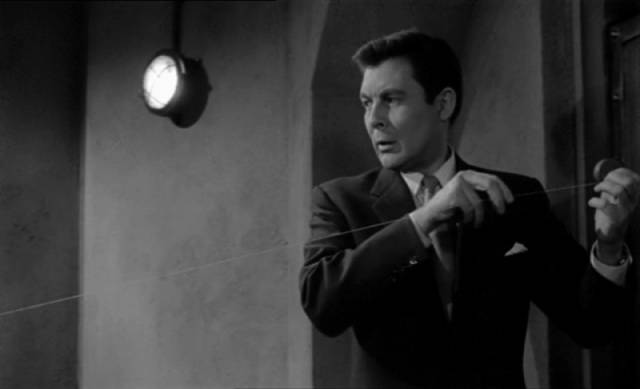
I binged the first few disks, but plan to slow down and occasionally dip into the rest over the next few months, partly to savour the experience of those resurfaced memories, partly to avoid getting bogged down in what will inevitably be a lot of repetition.
In addition to the official forty-seven movies in the series, the Network set includes another seven features which were eventually folded in for television syndication, similar in scale though produced by other companies. One of these, on disk three, really stands out. October Moth (1960) was written and directed by John Kruse, a successful screenwriter whose first feature credit was the script for Cy Endfield’s Hell Drivers (1957) – his second was Endfield’s Sea Fury (1958). Working mostly in television, Kruse eventually wrote a couple of effective exploitation thrillers for director Sidney Hayers, Assault and Revenge (both 1971), but directed only once.
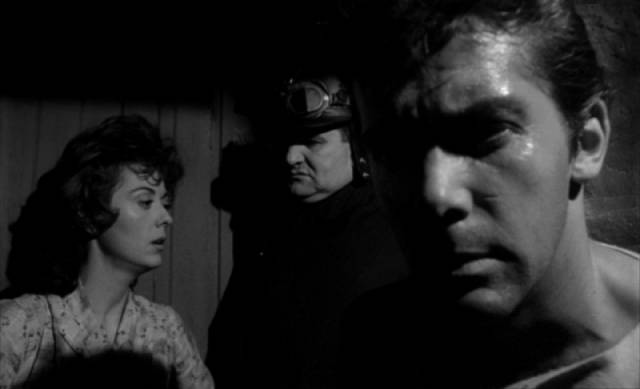
Steeped in Gothic atmosphere, October Moth differs from the Merton Park movies in a number of ways; while there’s a decidedly middle-class, urban quality to the Wallace adaptations, Kruse’s film is set on a remote, impoverished farm, where Molly (Lana Morris) lives with her brother Finlay (Lee Patterson), a hulking figure with intellectual and emotional problems which make him potentially violent. One night, out on the road, Finlay causes a car to swerve and crash and he carries the injured driver, a middle-aged woman (Sheila Raynor), back to the farm, insisting that she’s their dead mother come back.
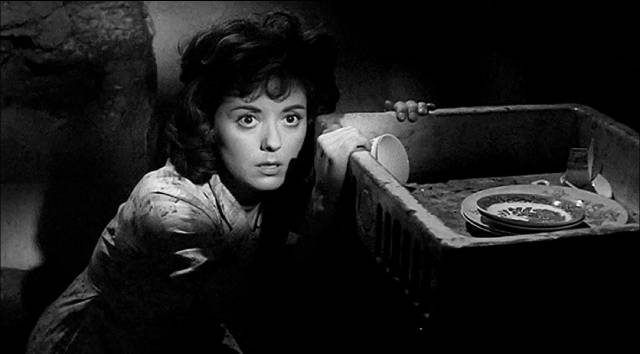
Molly realizes that the woman is going to die and tries to find a way, first to persuade Finlay to get her to a hospital, then to trick him so she can get the woman away while he’s distracted. She tries to enlist the help of a telephone lineman (Peter Dyneley) working nearby, but as night falls Finlay becomes more unhinged – he believes that their dead abusive father has also returned and hunts for the lineman with his shotgun. Molly grows more desperate, making poor decisions because, although she knows the woman is dying, she’s compelled to protect her brother because “he’s all I have left”. With both parents dead, she has invested herself entirely in maintaining the farm and making a home for Finlay.
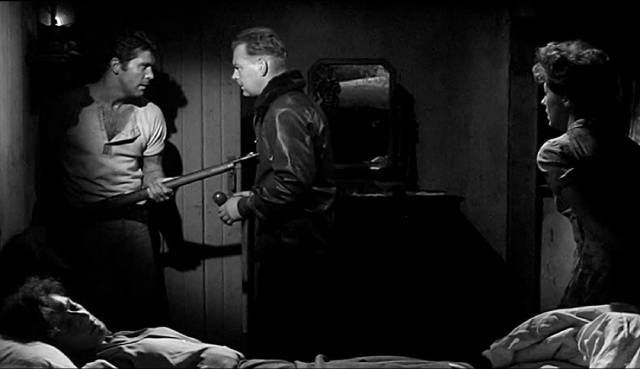
Although obviously set in the present (motorbikes, telephone lines), the farm seems to exist in a timeless limbo, something out of a Brontë novel where the harsh land and bleak weather manifest the broken spirits of people whose lives are hard and joyless. While Morris and Dyneley give effective performances, Patterson is a little rocky; he doesn’t do much to conceal his Canadian accent and perhaps overplays Finlay’s derangement at times. But cinematographer Michael Reed invests a great deal of care into the look of the film, with thick blacks and deep shadows giving palpable weight to the troubled psychology of the characters. October Moth is an unexpected little gem tucked away among the more familiar qualities of the Wallace adaptations.
Given their age and modest budgets, all the films I’ve watched so far look excellent, with minimal signs of print damage, and strong contrast and rich blacks giving them an authentic noir atmosphere.
*
The two BFI releases are Michael Powell and Emeric Pressburger’s One of Our Aircraft Is Missing (1942) and Lewis Gilbert’s The Good Die Young (1953), both films receiving fine new transfers with substantial extras.
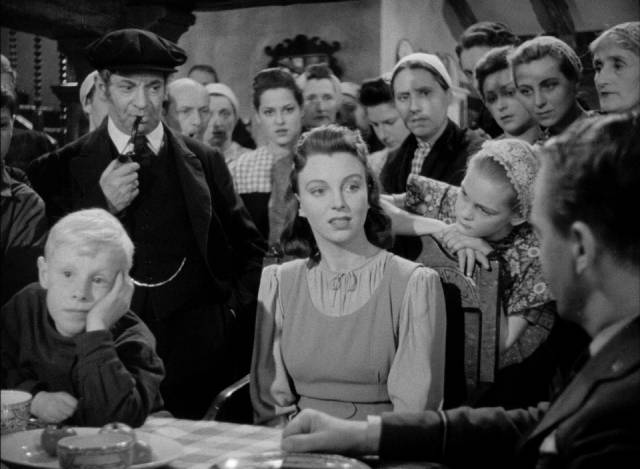
One of Our Aircraft Is Missing (Michael Powell, 1942)
Michael Powell and Emeric Pressburger had both been toiling in the film industry for a decade before they teamed up in 1939 for The Spy in Black, a World War One thriller made on the eve of the next big war. They teamed again for Contraband (1940), a wartime thriller, before cementing their partnership with a pair of major propaganda features designed to consolidate cooperation among the Allies. The first, 49th Parallel (1941), dealt with the crew of a German U-boat sunk in Hudson’s Bay who make their way south, evading capture in the hope of reaching the still-neutral United States. In a series of encounters, their fascist ideology is exposed and a disparate collection of characters from different backgrounds learn the importance of opposing the Nazis.
One of Our Aircraft Is Missing provides a kind of mirror image narrative, with the crew of a British bomber forced to bail out over the occupied Netherlands. As they make their way towards the North Sea, they encounter both members of the resistance and collaborators. While the submarine crew in the previous film must conceal their identities, the bomber crew must reveal themselves to the Dutch, risking exposure and capture. But the local population for the most part are unified against the Germans and once convinced that these men are who they say they are, and not Germans sent to expose the underground, they are provided with all the help they need.
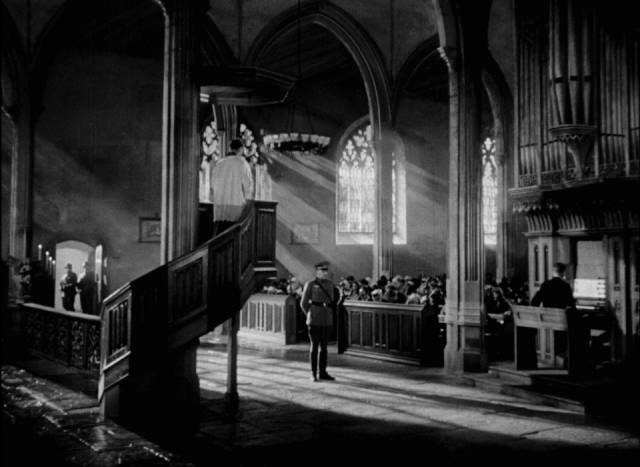
One of the most interesting aspects of Pressburger’s script is that the key figures in the crew’s escape are all women, each in turn passing the men on to the next station on the route. This was a deliberate strategy by Powell and Pressburger, working for the first time under their joint creative banner as The Archers, to emphasize the necessity for total mobilization against the Nazis. While the members of the crew (Godfrey Tearle, Eric Portman, Hugh Williams, Bernard Miles, Hugh Burden and Emrys Jones) are obviously the story’s continuing characters, it’s the three women played by Pamela Brown, Joyce Redman and Googie Withers who stand as the film’s heroes, risking everything with a pragmatic attitude which makes it possible for the men to survive and continue the fight.
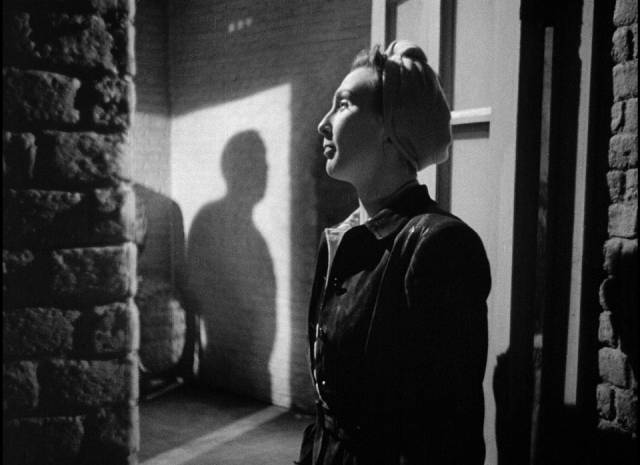
Interestingly, Powell and Pressburger followed these two rousing wartime adventures with the much more complicated The Life and Death of Colonel Blimp (1943), which took a very critical view of traditional military attitudes which were still rooted in the 19th Century and ideas of Empire and seemingly incapable of coping with the very different requirements of modern, industrialized warfare.
The Blu-ray comes in a slipcase with a reprint of a promotional booklet containing Pressburger’s synopsis of the story and the usual BFI booklet of essays and production information. There’s a commentary from Ian Christie, plus several other propaganda films – Powell’s An Airman’s Letter to His Mother (1941) and The Volunteer (1944), as well as Harry Watt’s Target for Tonight (1941), a short feature about a bombing raid similar to the one which starts off One of Our Aircraft Is Missing, and The Biter Bit (1943), produced by Alexander Korda to argue for the necessity of the mass Allied bombing of Germany.
*
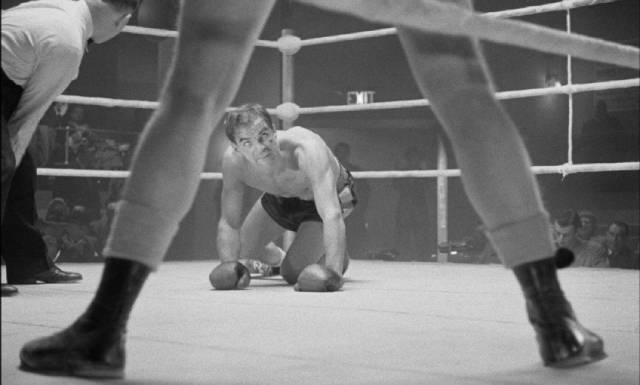
The Good Die Young (Lewis Gilbert, 1954)
Lewis Gilbert began his long career with some documentary shorts in the mid-’40s, followed by a string of B-movies, thrillers and comedies, leading to a couple of socially conscious British noirs in the early ’50s. The first, Cosh Boy (1953), dealt with post-war delinquency and violence growing out of the social disruptions arising out of the war. The next year, he made The Good Die Young (1954), based on a novel by American author and screenwriter Richard Macaulay, which Gilbert and co-writer Vernon Harris moved from Beverley Hills to post-war London.
Produced by Remus Films, a company formed after the war by John and James Woolf with an eye to international sales, the cast includes a mix of British and American actors in an episodic story which paints an unflattering portrait of a nation faltering in the adjustment to peace. It opens with four men in a car on a dark London street. The driver is Rave (Laurence Harvey), who immediately causes tension by passing guns to the other three. This is not what they were expecting, but Rave is obviously the dominant personality and their complaints quickly peter out. They are on their way to do a job and Rave insists that the guns are just for show.
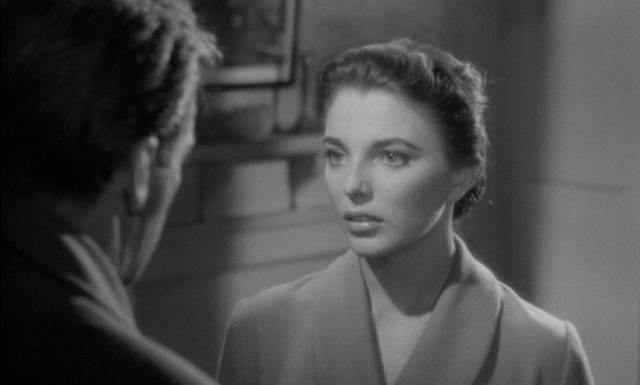
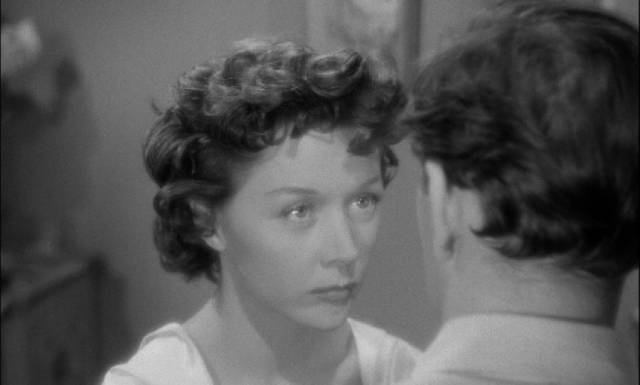
But before they arrive at the site of their planned robbery, we flash back to what has led to this moment. Each of the other three men has been struggling to regain a foothold in a civilian world which has already forgotten – if it ever really cared – about what they did during the war. Life is hard and relationships frayed by economic strain.
Mike Morgan (Stanley Baker) is a boxer whose wife Angela (Rene Ray) can’t stand what he does; he promises to get out of the game after one last win which will give them enough cash to start over. Trouble is, he has an injured hand and fighting will cause permanent damage. He does fight and the injury is bad, but it’s while he looks for work that it becomes critical, with a factory guard slamming a gate on the hand – it has to be amputated, not only making it impossible to fight again, but also making him unemployable.
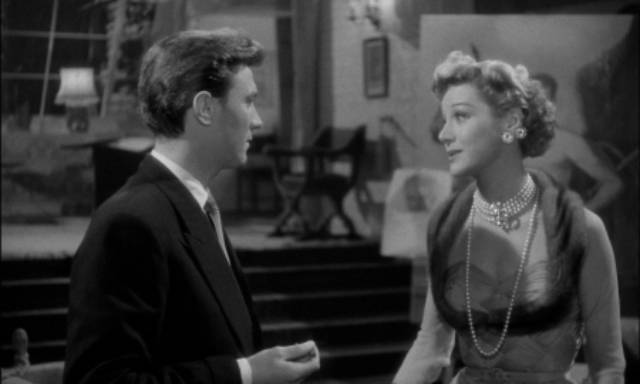
Joe Halsey (Richard Basehart), having married an English woman named Mary (Joan Collins), is working for his old boss in New York, but tormented by being separated from Mary, who is still in England looking after her ailing mother, Mrs. Freeman (Freda Jackson). He asks his employer for a week to go back to England and fetch her, but the man is completely unsympathetic, contemptuous of men who think the world owes them something just because they fought in the war. So Joe goes anyway and struggles to pry Mary away from her selfishly clinging mother, who plays up phony illnesses and threatens suicide if her daughter leaves her alone.
Eddie Blaine (John Ireland) is still in the forces and becoming increasingly bitter at the disinterest of his wife Denise (Gloria Grahame), a movie star more interested in her career than him and making no effort to conceal her affair with fellow actor Tod (Lee Patterson again). Determined to salvage the marriage, Eddie goes AWOL to stay in London when he’s transferred to the continent.
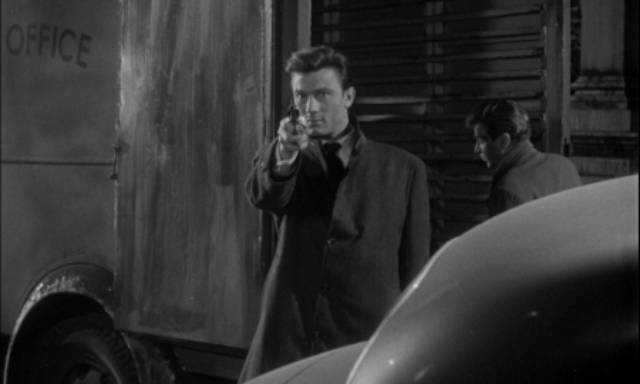
These three men eventually meet in a pub, where they commiserate with one another, eventually joined by Rave, an upper class sociopath who has been living off his wife’s money. But now she’s cut him off, demanding that he give up his gambling and emigrate with her to Africa. This doesn’t appeal to him and, talking to the three men in the pub, he casually floats a plan which could make them all rich. He knows someone who works at the post office and has been told that on certain nights a van delivers large amounts of cash … while breaking in would be difficult, they should have no trouble grabbing the money just as the van arrives.
The three men don’t take the idea seriously, but each faces a rapid downward spiral and desperation makes them finally acquiesce. None of them have any criminal experience, and despite his arrogance Rave isn’t much of a planner. The job goes wrong from the start when he casually shoots one of the guards from the delivery van, spooking the others who quickly scatter. In true heist movie fashion, it’s not the police arriving on the scene who unravel the plan but rather the conflicts among the thieves, particularly given Rave’s determination to keep all the money for himself. Each man’s hopes are cruelly dashed and their attempts to escape the grinding hardships of post-war life come to nothing.
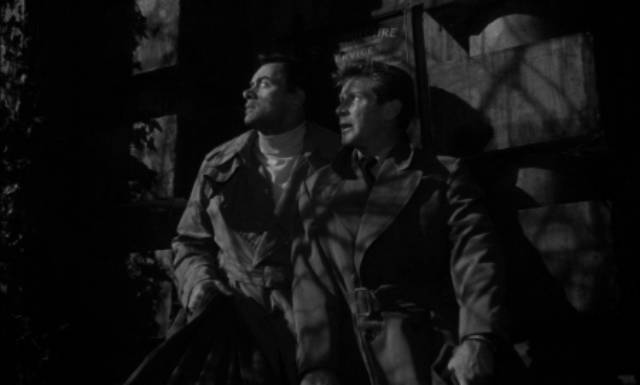
The film’s attention to the characters’ personal problems, all rooted in clearly defined social conditions, make it both more and less than a classic heist movie. Along with the elements of noir, it’s a social issues drama, a romantic melodrama and a snapshot of England at a very specific time — reminiscent of the kind of movie Basil Dearden was making in the ’50s: The Blue Lamp, Pool of London, Violent Playground and others. With the mix of character actors and stars, it’s a little tonally erratic – the bleak working class life of Mike and Angela clashes with the upper class problems of Rave and his artist wife Eve (Margaret Leighton), while Basehart, Ireland and Grahame give their parts a Hollywood polish which is occasionally at odds with the gritty realism of the setting.
And yet Gilbert largely holds it all together and brings it fully into focus in the final stretch with the robbery and its aftermath, which is dark, brutal and tightly paced.
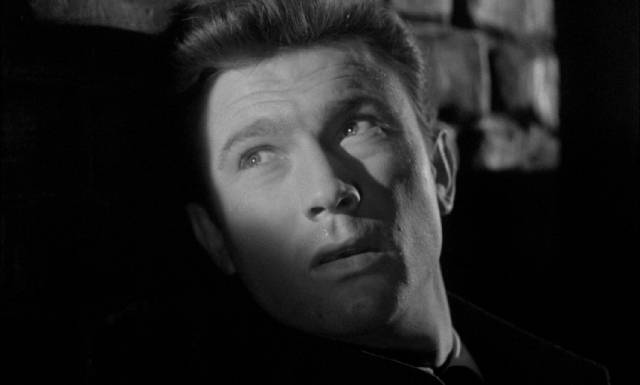
The dual-format edition includes both the British theatrical cut and the slightly longer export version. Interestingly, those few extra minutes aren’t more explicit moments of violence, but dialogue scenes in which the criticism of post-war society and its treatment of men who fought in the war is made explicit. The censors didn’t want English audiences hearing such things and perhaps being made to think that the government might be failing ordinary people.
In addition, there’s a silent film about a famous 19th Century boxing match, a couple of short documentaries about aspects of postwar life, and an interview with Gilbert from 1995.
*
Having initially grown up in a small village in Southeast England between the mid-’50s and mid-’60s, I seem to have two separate but parallel Englands in my memory. There’s the more prosaic one of lived experience – a full-colour place of green grass; narrow country lanes between high hedges weighed down in summer by blackberries; of gardens full or flowers, apple trees, plum trees; of fields brown with freshly plowed earth, turning green, then gold as the wheat and barley ripened; of building forts and mazes with the fresh bales before they were hauled away by the farmers for winter storage; of digging up potatoes in local fields with my friends for a few pennies. There were long summer days when we’d take off on our bikes to the derelict Second World War aerodrome outside the village, or further afield to Hatfield Forest, a park with a lake in the centre where you could rent a small rowboat, or if you didn’t have the money for that climb the ancient trees. That England has been partially wiped away by trips back over the decades, with places transformed until they no longer coincide with memory, the changes fragmenting what I seem to recall which no longer matches the reality.
Then there’s another England, starker, more exciting, sometimes menacing, a black-and-white place seen on television and in movies – like Bryan Forbes’ Whistle Down the Wind or those Merton Park B-movies – a place which still remains, unchanged, to be accessed again when I happily come across those movies now on disk. Those memories, unlike my own lived memory, have lasted and strangely now seem more real. I can go back and visit any time I want.
Comments
I greatly enjoyed your walk down memory lane! I have always loved British movies. One of my favorites is The Spy Who Came in From the Cold.
I’ve never been to England but I can imagine what London was like while I was a child growing up in the 1960’s.
Not too long ago I picked up a British Noir box set that has Cosh Boy in it. Very interesting look at British film in a special era.
I guess it’s not unusual to remain attached to the earliest things we encounter. Everything else builds on those experiences, but the foundation remains … and for me those black-and-white movies helped forge a lifelong love of cinema.